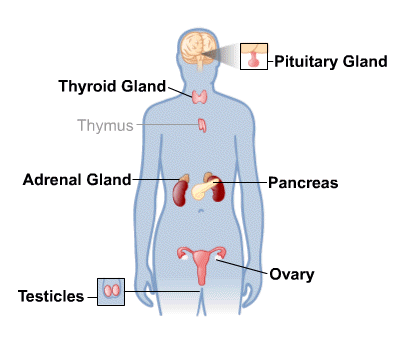
The endocrine system is correlated to the mind because of the experiential aspect. The pineal glad, hypothalamus, and pituitary glads are all responsible of digestions of the censorial faculties and their translations of hormones into the blood stream. and therefore the correlation of manas to the endocrine system and furthermore the productions of thoughts, actions, and beliefs.
Samanya, basically denotes characteristic similarities that allow two or more subjects to be grouped together. whereas, Vishesha is a specific difference, which makes it a point to single out an individual of that class/group.
These classifications are used in almost every branch or subcategory in ayurveda. when you look at the qualities of a certain food, plant, activity etc, you can then either single out their characteristics, or group them together to form similar or opposing groups.
For example, when looking at incompatible foods, you can group them together for ojas promoting foods, or adversely for ama creating recipes.
Health is not simply the absence of disease, but is a state of balance that provides for wellbeing, clarity, and joy. Maharishi Ayurveda emphasizes creating balance in all areas of life.
Again, very similar to the previous answer, the skin is largest organ in the body, which is responsible for keeping the inside in, and the outside out! just like the ego is responsible for distinguishing ones self from the outside world. There is one very important point that needs to brought up here in terms of the permeability of the skin, our "higher" self is what interprets the good from the bad and the me from them, however, this aspect is also what allows dysfunction or improper use of ego. If we believe that there is nothing that will penetrate our mind/body/self/ we are considered to have an over developed sense of ego, where in reality, understanding those limitations is the the true meaning of consciousness. (IN MY OPINION!)
The immune system is correlated with ahamkar because it is what deciphers the Self from the outside world. Whereas Ego is given a negative conotation in the medias view, it is absolutely essential aspect of the physiology in terms of distinguishing the body from any "foreign" pathogens or bacteria. When there is a dysfunction in this relationship, it gives rise to autoimmune disorders.
One very interesting aspect we spoke about was the samhita in the digestive system. Rishi, devata, and channdas in the stomach. The entire structure itself is the actual samhita. The input of this system is the pyloric sphincter, which receives the food, which is stored in the kapha part of the stomach. The lower part of the stomach, including the hydrochloric acid and pepsin, which helps in the breakdown of the food has the transformative qualities of devata. and/or Pitta. The final output is the assimilation of chyme or aharas into the duodenum (ghrani)
Another topic we covered was the actual assimilation into the dhatus. Dhatu or the stable dhatu and then the subordinate dhatu, then mala dhatu which is responsible for waste FROM the tissue agnis, and lastly, the asthaya dhatu which is technically a part of the following dhatu, helps the transition.
Written by Manas Kshirsagar
*Disclaimer
The sole purpose of these articles is to provide information about
the tradition of yoga and ayurveda. This information is not intended
for use in the diagnosis, treatment, cure or prevention of any
disease. If you have any serious acute or chronic health concern,
please consult a trained health professional who can fully assess
your needs and address them effectively. Check with your doctor
before taking herbs or using essential oils when pregnant or
nursing.
The sole purpose of these articles is to provide information about
the tradition of yoga and ayurveda. This information is not intended
for use in the diagnosis, treatment, cure or prevention of any
disease. If you have any serious acute or chronic health concern,
please consult a trained health professional who can fully assess
your needs and address them effectively. Check with your doctor
before taking herbs or using essential oils when pregnant or
nursing.

No comments:
Post a Comment